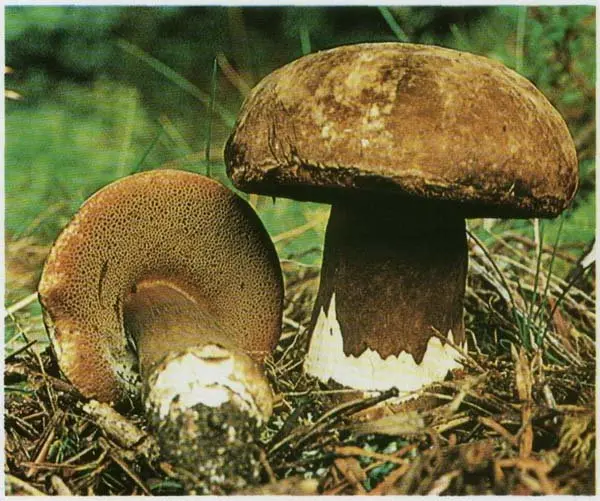Porphyry porphyry (Porphyrellus pseudoscaber)
- Division: Basidiomycota (Basidiomycetes)
- Subdivision: Agaricomycotina (Agaricomycetes)
- Class: Agaricomycetes (Agaricomycetes)
- Subclass: Agaricomycetidae (Agaricomycetes)
- Order: Boletales (Boletales)
- Family: Boletaceae (Boletaceae)
- Genus: Porphyrellus
- Type: Porphyrellus pseudoscaber (Porphyry spore)
- Porphyrel
- Boletus purpurovosporovy
- Tylopilus porphyrosporus

Fruit body velvety, dark.
Leg, cap and tubular layer grey-brown.
Hat diameter from 4 to 12 cm; pillow-shaped or hemispherical shape. When pressed, the tubular layer turns black-brown. Red-brown spore. Gray flesh, which changes color when cut, taste and smell unpleasant.
Location and season.
It grows in broad-leaved, rarely coniferous forests in Europe, Asia and North America. In the former USSR, it was noted in the same place as the cone fungus flaccidum (in mountainous regions, in coniferous forests, in summer and autumn), as well as in the south-west of Ukraine and in the mountain forest of southern Kyrgyzstan. In the south of the Far East, several more species of this genus are found.
similarity.
Difficult to confuse with another species.
Rating.
Edible, but worthless. The mushroom is of low quality and rarely eaten.









